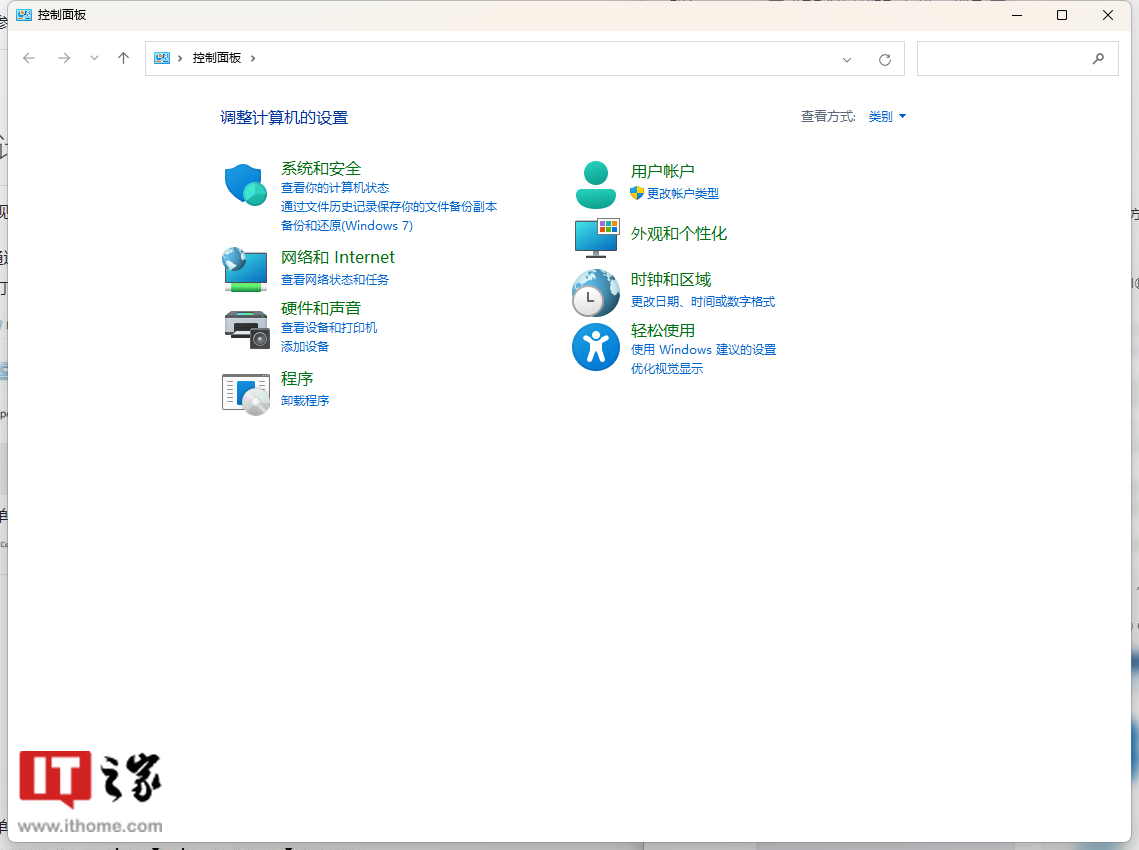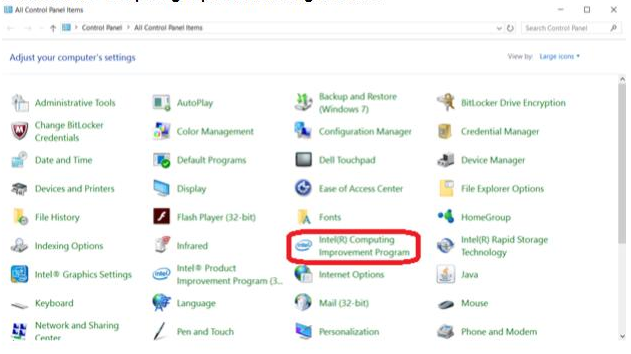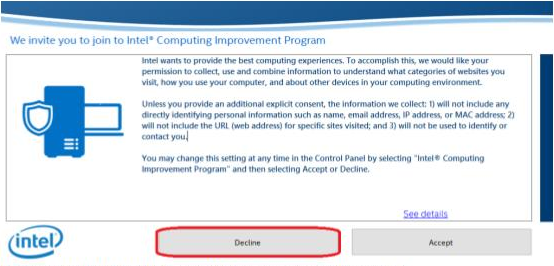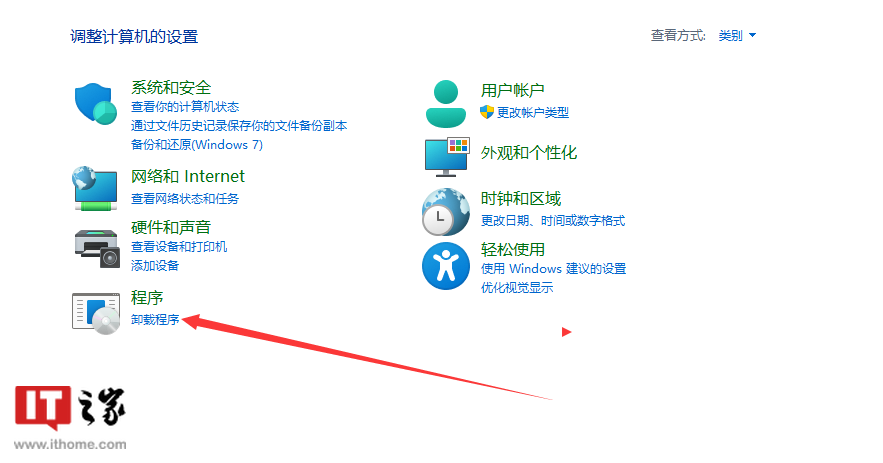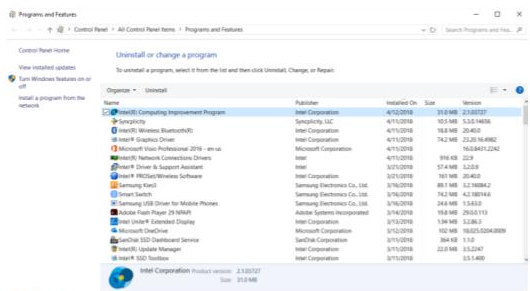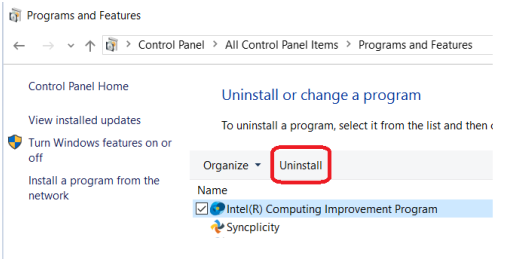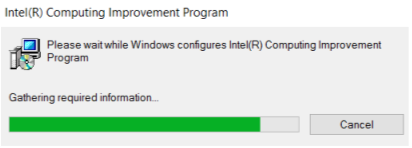 Technology peripherals
Technology peripherals
 It Industry
It Industry
 Intel Arc graphics driver update, collects Windows user telemetry data by default
Intel Arc graphics driver update, collects Windows user telemetry data by default
Intel Arc graphics driver update, collects Windows user telemetry data by default
According to news from this site on August 7, TechPowerUP discovered that the latest Intel GPU driver (31.0.101.4578) contains a new component that is installed by default, but the release notes did not mention anything about it.
According to reports, this new component, called the Computing Improvement Program (CIP), is designed to collect certain telemetry data for Intel, such as the categories of websites users visit (excluding specific URLs) and how they use their computers. .
In addition, Intel will collect information about system hardware specifications, regional information and device manufacturers, including nearby LAN devices such as smart TVs.
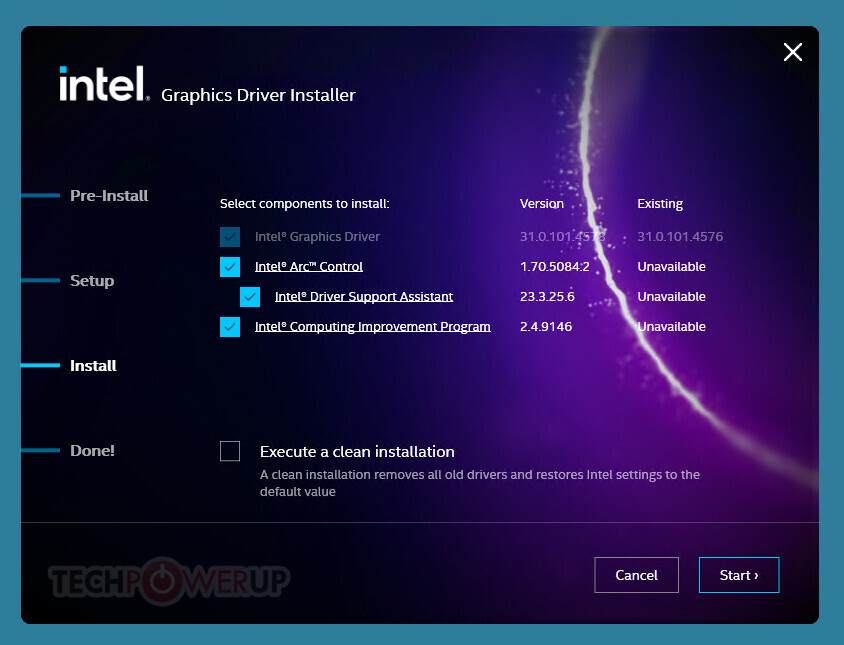
Of course, you can also refuse to provide telemetry data to Intel, but that's not the same as AMD drivers explicitly asking the user for data collection during installation , it is not that simple for Intel to withdraw from CIP.
It is worth mentioning that Nvidia also has a similar telemetry function, and this function is installed and turned on by default with the GeForce graphics driver. You cannot exit it yourself because it does not even appear in "Customize" in the installer options.
In contrast, AMD Software Adrenalin will provide users with an option during installation to prevent users from turning on data collection without their knowledge, regardless of whether you select "Typical", "Driver Only" or " Customize" has a whole page of instructions dedicated to this operation, but AMD also checks it by default. Some more impatient users may click to agree without seeing it clearly.
This site is attached with Intel’s official documentation:
Collected data
If I participate in the Intel Computing Improvement Program, what data will be collected and how will it be used? ?
Intel is committed to providing the best computing experience. To accomplish this, we ask that you allow us to collect, use and combine information to understand:
The categories of websites you visit, but not the URLs themselves
How you use your computer
System information for your computer
Other devices in your computing environment
Usage information includes:
Software usage: For example, frequency and duration of application usage (such as Intel® Driver Programs and Support Assistant), but not the app content itself (such as specific actions or keyboard input)
Feature Usage: For example, how much RAM you typically use, or the average battery of your laptop Lifespan, etc.
Other devices in your computing environment (categories of websites you visit, but not the URLs themselves, including Universal Plug and Play devices and devices on a local area network to your computer Devices that broadcast information: for example, Smart TV model and vendor information, and video streaming devices)
The category of the website you visit, but not the URL itself (information collected includes categories Web browsing history, which shows when and how often sites were visited in a specific category (i.e. social media, personal finance, or news). All visits to sites are grouped into one of 30 categories. Without your explicit permission, we URLs, page titles, or user-specific content will not be collected)
The system information collected includes, but is not limited to:
Your device manufacturer
CPU model
Memory and display configuration
- ## Operating System Version
- Software Version
- Region and Language Settings
- Regional Location and Time Zone
If I participate in this program, will any personal information be included in the information collected? The information we collect:If these types of information come from your request, you will first be prompted for additional consent. The information we collect includes a randomly generated identifier, which allows for Combine information from your systems within to better understand usage trends.
- will not include any directly identifiable personal information, such as name, email address, IP address or MAC address, etc.
- Will not include the URL ((web address) of the specific site visited
- will not be used to identify or contact you
If I participate in the Intel Computing Improvement Program, where is the collected data stored and for how long? Data collected from your system is temporarily stored on your system before being uploaded to a secure cloud environment, which may be physically located in accordance with Intel's Privacy Notice. Intel retains data for up to seven years. Intel takes reasonable steps to reduce the risk that any data retained for more than three years can be traced to a specific computer.
If I choose to join the program now, can I leave the program later?
Yes, stop participating in the program through the control panel:
1. Open the control panel (Windows key R, then type "control panel" and click "OK")
#2. Click View by and select Large Icons or Small Icons.
3. Find the Intel Computing Improvement Program tab.
4. If the Windows User Account Control window appears, allow the application to make changes.
5. In the Intel Computing Improvement Program window, click Decline.
How to uninstall the Intel Computing Improvement Program?
1. Open the Control Panel
2. Open Programs and Features from the Windows Control Panel and select Uninstall a program.
3. Select Intel Computing Improvement Program.
4. Click Uninstall.
5. If prompted to confirm the uninstallation, click Yes.
6. If prompted to close open applications, select Automatically close applications and try to restart after installation is complete, then click OK.
7. If prompted again to close the application, click OK.
8.Intel Computing Improvement Program will now be uninstalled.
9. The uninstallation is now complete.
Advertising statement: The external jump links (including but not limited to hyperlinks, QR codes, passwords, etc.) contained in the article are used to transmit more information and save selection time. The results are only For reference, all articles on this site contain this statement.
The above is the detailed content of Intel Arc graphics driver update, collects Windows user telemetry data by default. For more information, please follow other related articles on the PHP Chinese website!

Hot AI Tools

Undresser.AI Undress
AI-powered app for creating realistic nude photos

AI Clothes Remover
Online AI tool for removing clothes from photos.

Undress AI Tool
Undress images for free

Clothoff.io
AI clothes remover

Video Face Swap
Swap faces in any video effortlessly with our completely free AI face swap tool!

Hot Article

Hot Tools

Notepad++7.3.1
Easy-to-use and free code editor

SublimeText3 Chinese version
Chinese version, very easy to use

Zend Studio 13.0.1
Powerful PHP integrated development environment

Dreamweaver CS6
Visual web development tools

SublimeText3 Mac version
God-level code editing software (SublimeText3)

Hot Topics
 1677
1677
 14
14
 1430
1430
 52
52
 1333
1333
 25
25
 1278
1278
 29
29
 1257
1257
 24
24
 Intel announces Wi-Fi 7 BE201 network card, supports CNVio3 interface
Jun 07, 2024 pm 03:34 PM
Intel announces Wi-Fi 7 BE201 network card, supports CNVio3 interface
Jun 07, 2024 pm 03:34 PM
According to news from this site on June 1, Intel updated the support document on May 27 and announced the product details of the Wi-Fi7 (802.11be) BE201 network card code-named "Fillmore Peak2". Source of the above picture: benchlife website Note: Unlike the existing BE200 and BE202 which use PCIe/USB interface, BE201 supports the latest CNVio3 interface. The main specifications of the BE201 network card are similar to those of the BE200. It supports 2x2TX/RX streams, supports 2.4GHz, 5GHz and 6GHz. The maximum network speed can reach 5Gbps, which is far lower than the maximum standard rate of 40Gbit/s. BE201 also supports Bluetooth 5.4 and Bluetooth LE.
 Intel Core Ultra 9 285K processor exposed: CineBench R23 multi-core running score is 18% higher than i9-14900K
Jul 25, 2024 pm 12:25 PM
Intel Core Ultra 9 285K processor exposed: CineBench R23 multi-core running score is 18% higher than i9-14900K
Jul 25, 2024 pm 12:25 PM
According to news from this website on July 25, the source Jaykihn posted a tweet on the X platform yesterday (July 24), sharing the running score data of the Intel Core Ultra9285K "ArrowLake-S" desktop processor. The results show that it is better than the Core 14900K 18% faster. This site quoted the content of the tweet. The source shared the running scores of the ES2 and QS versions of the Intel Core Ultra9285K processor and compared them with the Core i9-14900K processor. According to reports, the TD of ArrowLake-SQS when running workloads such as CinebenchR23, Geekbench5, SpeedoMeter, WebXPRT4 and CrossMark
 Intel N250 low-power processor exposed: 4 cores, 4 threads, 1.2 GHz frequency
Jun 03, 2024 am 10:26 AM
Intel N250 low-power processor exposed: 4 cores, 4 threads, 1.2 GHz frequency
Jun 03, 2024 am 10:26 AM
According to news from this site on May 16, the source @InstLatX64 recently tweeted that Intel is preparing to launch a new N250 "TwinLake" series of low-power processors to replace the N200 series "AlderLake-N" series. Source: videocardz The N200 series processors are popular in low-cost laptops, thin clients, embedded systems, self-service and point-of-sale terminals, NAS and consumer electronics. "TwinLake" is the code name of the new processor series, which is somewhat similar to the single-chip processor Dies using a ring bus (RingBus) layout, but with an E-core cluster to complete the computing power. The screenshots attached to this site are as follows: AlderLake-N
 Close-up of LGA-1851 socket, Guangji showcases new embedded motherboard: supports Intel Core Ultra 200 series processors
Apr 11, 2024 pm 09:22 PM
Close-up of LGA-1851 socket, Guangji showcases new embedded motherboard: supports Intel Core Ultra 200 series processors
Apr 11, 2024 pm 09:22 PM
According to the news from this site on April 11, according to the German technology media ComputeBase, Guangji Technology attended the EmbeddedWorld2024 conference and publicly demonstrated a motherboard using the LGA-1851 slot for the first time. This motherboard is compatible with Intel Meteor Lake processors and is mainly used in embedded systems. The media took an in-depth look and shared multiple photos, confirming that LGA-1851 is the same size as Intel’s existing LGA-1700 socket. The relevant pictures attached to this site are as follows: Not compatible with CPU, but compatible with CPU coolers but not LGA-1851 socket 151 additional pins were added and the CPU locking system was adjusted, so it is not compatible with existing LGA-1700 socket processors. But because LG
 MSI launches new MS-C918 mini console with Intel Alder Lake-N N100 processor
Jul 03, 2024 am 11:33 AM
MSI launches new MS-C918 mini console with Intel Alder Lake-N N100 processor
Jul 03, 2024 am 11:33 AM
This website reported on July 3 that in order to meet the diversified needs of modern enterprises, MSIIPC, a subsidiary of MSI, has recently launched the MS-C918, an industrial mini host. No public price has been found yet. MS-C918 is positioned for enterprises that focus on cost-effectiveness, ease of use and portability. It is specially designed for non-critical environments and provides a 3-year service life guarantee. MS-C918 is a handheld industrial computer, using Intel AlderLake-NN100 processor, specially tailored for ultra-low power solutions. The main functions and features of MS-C918 attached to this site are as follows: Compact size: 80 mm x 80 mm x 36 mm, palm size, easy to operate and hidden behind the monitor. Display function: via 2 HDMI2.
 ASUS releases BIOS update for Z790 motherboards to alleviate instability issues with Intel's 13th/14th generation Core processors
Aug 09, 2024 am 12:47 AM
ASUS releases BIOS update for Z790 motherboards to alleviate instability issues with Intel's 13th/14th generation Core processors
Aug 09, 2024 am 12:47 AM
According to news from this website on August 8, MSI and ASUS today launched a beta version of BIOS containing the 0x129 microcode update for some Z790 motherboards in response to the instability issues in Intel Core 13th and 14th generation desktop processors. ASUS's first batch of motherboards to provide BIOS updates include: ROGMAXIMUSZ790HEROBetaBios2503ROGMAXIMUSZ790DARKHEROBetaBios1503ROGMAXIMUSZ790HEROBTFBetaBios1503ROGMAXIMUSZ790HEROEVA-02 joint version BetaBios2503ROGMAXIMUSZ790A
 Intel explains in detail the Intel 3 process: applying more EUV lithography, increasing the frequency of the same power consumption by up to 18%
Jun 19, 2024 pm 10:53 PM
Intel explains in detail the Intel 3 process: applying more EUV lithography, increasing the frequency of the same power consumption by up to 18%
Jun 19, 2024 pm 10:53 PM
According to news from this site on June 19, as part of the 2024 IEEEVLSI seminar activities, Intel recently introduced the technical details of the Intel3 process node on its official website. Intel's latest generation of FinFET transistor technology is Intel's latest generation of FinFET transistor technology. Compared with Intel4, it has added steps to use EUV. It will also be a node family that provides foundry services for a long time, including basic Intel3 and three variant nodes. Among them, Intel3-E natively supports 1.2V high voltage, which is suitable for the manufacturing of analog modules; while the future Intel3-PT will further improve the overall performance and support finer 9μm pitch TSV and hybrid bonding. Intel claims that as its
 Intel Panther Lake mobile processor specifications exposed: up to '4+8+4' 16-core CPU, 12 Xe3 core display
Jul 18, 2024 pm 04:43 PM
Intel Panther Lake mobile processor specifications exposed: up to '4+8+4' 16-core CPU, 12 Xe3 core display
Jul 18, 2024 pm 04:43 PM
According to news from this site on July 16, following the revelation of the specifications of the ArrowLake desktop processor and the BartlettLake desktop processor, blogger @jaykihn0 released the specifications of the mobile U and H versions of the Intel PantherLake processor in the early morning. The Panther Lake mobile processor is expected to be named the Core Ultra300 series and will be available in the following versions: PTL-U: 4P+0E+4LPE+4Xe, 15WPL1PTL-H: 4P+8E+4LPE+12Xe, 25WPL1PTL-H: 4P+8E+4LPE+ 4Xe, 25WPL1. The blogger also released the 12Xe nuclear display version of the PantherLake processor.




